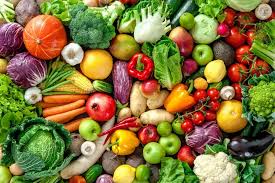Advertisements
Creating a balanced and healthy diet may seem like a complex task, but the truth is that, with the right knowledge, it is possible to transform this mission into a simple and rewarding process. Imagine having plenty of energy, feeling good about your body and still promoting your long-term health. All of this can be achieved by following a well-structured eating plan that meets your body's nutritional needs. 🌿
This guide presents five easy-to-implement steps that will help you create a diet that not only feeds you, but also nourishes you. From the importance of understanding the essential food groups to the need for balance and variety, each step has been designed to help you adopt healthier eating habits in a practical and sustainable way.
Advertisements
Through simple and straightforward tips, you will learn how to create meals that are satisfying and provide all the necessary nutrients. The integration of fruits, vegetables, lean proteins and complex carbohydrates into your daily diet will be demystified, allowing anyone, regardless of their experience with nutrition, to follow these steps with ease.
Additionally, the role of hydration and the importance of listening to your body will also be explored, highlighting how small adjustments to your daily routine can result in big changes to your health. Discover how mindfulness while eating can positively influence your physical and emotional well-being.
Advertisements
Get ready to revolutionize the way you think about food. By the end of this guide, you will be equipped with the tools you need to start a healthy, balanced and vital life journey. 🍏✨

Understanding the Importance of a Balanced Diet
Eating a balanced, healthy diet is one of the most important steps you can take to improve your overall health and well-being. Eating healthy isn’t just about losing weight; it’s about providing your body with the nutrients it needs to function properly, boosting your energy, and promoting overall well-being. But what exactly is a balanced diet? It involves eating a variety of foods from different food groups, ensuring that you get a wide range of nutrients. These include carbohydrates, proteins, healthy fats, vitamins, and minerals. A balanced eating plan can help prevent chronic diseases such as diabetes, heart disease, and obesity. Plus, eating the right foods can improve your mood and increase your productivity. Let’s explore practical steps to help you create a balanced, healthy diet.
Step 1: Know Your Body's Nutritional Needs
Understanding your body’s nutritional needs is the first step to a balanced diet. Everyone is unique, and their needs may vary. Factors such as age, gender, activity level, and health conditions should be considered. It’s crucial to recognize that what works for one person may not work for another. Consult a healthcare professional or dietitian for a personalized assessment. They can help you determine the appropriate amount of calories, macronutrients (carbs, proteins, fats), and micronutrients (vitamins and minerals) that you need on a daily basis. Keep in mind that our needs can change over time, so it’s important to review and adjust your diet as needed. 🍎
Step 2: Variety is the Key to Success
A balanced diet is colorful and varied. Including a wide variety of foods in your daily meals ensures that you are getting all the nutrients you need. Try to incorporate different types of fruits and vegetables, whole grains, lean proteins, and healthy fats. Fruits and vegetables, for example, provide fiber, vitamins, and antioxidants that are essential for your health. Whole grains, such as brown rice and oats, are rich in fiber and aid in digestion. Lean proteins, such as chicken, fish, and legumes, are essential for building and repairing tissue. Healthy fats, found in avocados, nuts, and olive oil, are important for heart health. By varying your foods, you can also reduce your risk of developing nutritional deficiencies and keep your meals interesting and tasty.
Step 3: Balancing Macronutrients
Macronutrients—carbohydrates, proteins, and fats—are essential to a balanced diet. Each of these plays a crucial role in our bodies. Carbohydrates are our primary source of energy. Choose complex carbohydrates, such as those found in whole grains, vegetables, and legumes, as they are digested more slowly, providing sustained energy and helping to maintain stable blood sugar levels. Protein is essential for building and repairing tissues and is essential for the functioning of the immune system. Choose lean, varied sources. Fats are important for the absorption of fat-soluble vitamins and the production of hormones. Choose healthy fats, such as those found in fish, nuts, and olive oil. By balancing these macronutrients, you help ensure that your body gets the energy and nutrients it needs to function optimally.
Recommended Articles
Step 4: Meal Planning and Portion Control
Meal planning is an effective strategy for maintaining a balanced diet. By planning your meals in advance, you can ensure that you are including all the necessary food groups in your daily diet. Start by making a grocery list based on the meals you have planned. This will not only save you time and money, but it will also help you avoid impulsive food choices. Portion control is equally important. Even healthy foods can contribute to weight gain if consumed in excess. Use smaller plates to help control portions and eat slowly, paying attention to your body’s fullness cues. Consider eating small meals throughout the day instead of large meals to help maintain steady energy levels and avoid overeating.
Step 5: Proper Hydration and Beverage Choices
Hydration is often overlooked, but it’s a vital part of a balanced diet. Water is essential for nearly every function in your body, including digestion, circulation, and regulating body temperature. Make sure to drink water throughout the day, adjusting the amount based on your activity level and weather conditions. In addition to water, it’s important to make healthy beverage choices. Limit sugary and alcoholic beverages, as they can add empty calories to your diet. Instead, opt for herbal teas, unsweetened juices, and naturally flavored sparkling water. Remember, proper hydration helps maintain energy, improves focus, and supports overall health. 🥤
Adapting the Diet to Your Needs and Lifestyle
A balanced diet doesn’t have to be rigid or restrictive. Adapting it to your lifestyle is essential to ensuring long-term adherence. If you have a busy lifestyle, opt for meals that are easy to prepare or that can be made in large quantities and stored for later consumption. If eating out is part of your routine, choose restaurants that offer healthy options and don’t be afraid to make menu substitutions. Eat mindfully, paying attention to the taste and texture of your food, which can increase your satisfaction with meals. Remember, a balanced diet is about consistency and moderation, not perfection. With patience and practice, creating a diet that works for you will become second nature.
Conclusion
In conclusion, creating a balanced and healthy diet does not have to be a complex task. By following the 5 simple steps presented, anyone can start to effectively transform their diet. First of all, it is essential to understand the importance of food variety, ensuring the intake of all the nutrients necessary for the proper functioning of the body. Furthermore, we cannot forget the importance of hydration, which is often neglected. By including more fruits and vegetables in your daily diet, you will not only increase your fiber intake, but also essential vitamins and minerals. Another important step is portion control, which helps maintain a healthy weight and prevents excessive calorie consumption. Finally, maintaining a balance between proteins, carbohydrates and healthy fats ensures that your body receives quality energy. Therefore, by implementing these practical tips, you will be on the right path to a healthier and more balanced life. 💪🌱 With discipline and small adjustments in your daily life, a balanced diet is perfectly achievable. Remember: the secret is to make conscious choices and maintain healthy habits in the long term.




